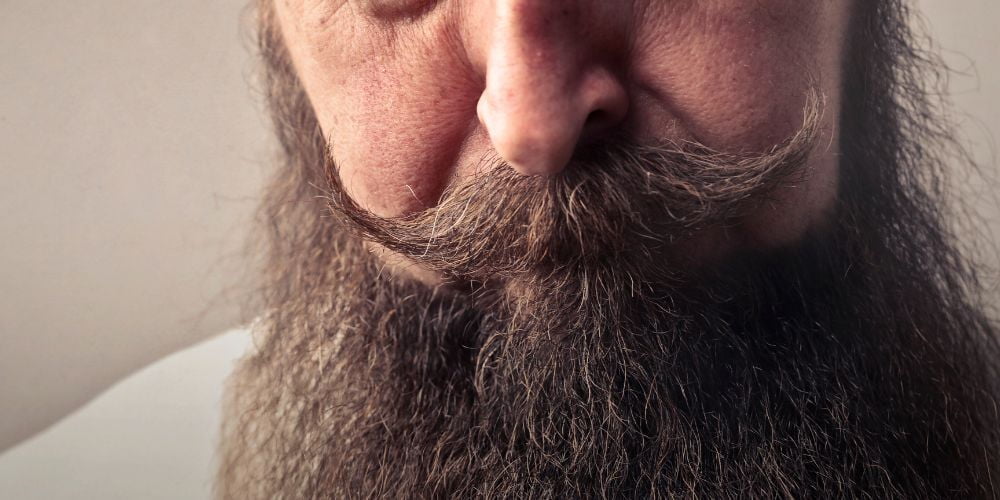Men’s facial hair has become popular, with mustaches being one of the most popular styles. Unfortunately, not everyone is born with a thick, well-defined mustache. This is where the mustache transplant comes into play. Mustache transplant is a cosmetic surgical procedure in which hair follicles from the scalp are transplanted to the mustache area. This article will explain what a mustache transplant is, how it works, the techniques used, the benefits and risks, what patients should expect during and after surgery, how to prepare for the procedure, and how to care for the transplanted hair after the procedure.
What exactly is Mustache Transplant?
A mustache transplant is a surgical procedure in which hair follicles from the scalp are transplanted to the upper lip area. The procedure is performed to improve the appearance of the mustache or to create a new mustache where none previously existed. It can also be used to thicken an existing mustache or fill in gaps and scars.
What Is the Process of Mustache Transplantation?
Hair follicles are extracted from the donor area, which is usually the scalp, during the procedure. Hair follicles are extracted and transplanted into the mustache area. The procedure is performed under local anesthesia, and the patient remains conscious throughout.
The Methods Used in Mustache Transplantation
Mustache transplantation involves two main techniques:
Follicular Units Transplantation(FUT)
FUT is a technique in which a strip of hair is removed from the donor area and dissected into individual hair follicles. After that, the hair follicles are transplanted into the mustache area. This technique is ideal for patients with a large area to cover or who require a large number of hair follicles.
Follicular Unit Extraction (FUE)
FUE is a technique that involves using a punch tool to extract individual hair follicles from the donor area. After that, the hair follicles are transplanted into the mustache area. This technique is ideal for patients who need fewer hair follicles or have a smaller area to cover.
Direct Hair Implantation (DHI)
is a relatively new hair restoration technique that is gaining popularity.
Hair follicles are extracted individually from the donor area using a special device called a Choi Implanter Pen in the DHI method. The pen makes a small incision in the skin and directly implants the hair follicle into the recipient area. The implantation procedure is precise and does not necessitate the preparation of recipient holes.
The DHI method has a number of advantages over other techniques. It enables, for example, more precise placement of hair follicles, resulting in a more natural-looking mustache. It also requires less downtime and recovers faster than other techniques.
The DHI method, on the other hand, is more labor-intensive and necessitates a higher level of skill and expertise. It is also more expensive than other techniques. Furthermore, not all patients are suitable candidates for the DHI method, as it may not be appropriate for those with very thin or sparse hair.
Mustache Transplant Advantages
Improved Appearance
Mustache transplantation can improve the appearance of the mustache by making it fuller, thicker, and more defined.
Boost Your Confidence
Having a well-defined and thicker mustache can boost a person’s confidence and self-esteem, especially if they previously had a patchy or thin mustache.
Permanent Solution
For those who are dissatisfied with their natural mustache, a mustache transplant is a permanent solution. The transplanted hair follicles will continue to grow in the mustache area.
The Risks of Mustache Transplant
Infection
Infection is a risk with any surgical procedure. To avoid infections, patients must take care of the transplanted area and follow the doctor’s instructions.
Bleeding
There may be some bleeding during and after the procedure, but it is usually minor and goes away on its own.
Scarring
Scarring in the donor and recipient areas is possible, but it can be reduced by selecting a skilled and experienced surgeon.
What Patients Can Expect During and Following Mustache Transplant Surgery?
Before the Procedure
Patients will meet with the surgeon prior to the procedure. The surgeon will examine the patient’s mustache and donor area to see if he or she is a good candidate for the procedure. In addition, the surgeon will explain the procedure and the risks involved, as well as answer any questions the patient may have.
Throughout the Procedure
The procedure is performed under local anesthesia, and the patient remains conscious throughout. The surgeon will use the appropriate technique (FUT or FUE) to extract hair follicles from the donor area and transplant them into the mustache area. Depending on the number of hair follicles transplanted, the entire procedure can take several hours.
Following the Procedure
The patient may experience swelling, bruising, and redness in the donor and recipient areas following the procedure. To prevent infection, the surgeon will prescribe pain relievers and antibiotics. The patient must avoid strenuous activities and follow the surgeon’s post-operative care instructions.
How Should You Prepare for a Mustache Transplant?
Select an Expert and Experienced Surgeon
It is critical to select a skilled and experienced surgeon with a proven track record of mustache transplant procedures. This reduces the possibility of complications and ensures the best possible outcome.
Quit smoking
Smoking can impede healing and increase the risk of complications. Patients should refrain from smoking for at least two weeks before and two weeks after the procedure.
Avoid Taking Blood Thinners
To avoid excessive bleeding during and after the procedure, patients should refrain from taking blood-thinning medications such as aspirin and ibuprofen for at least two weeks prior to the procedure.
Make Time for Recovery
Patients should expect some downtime following the procedure. They may need to take a few days off work to heal properly.
How to Care for Your Transplanted Hair After Surgery?
Follow the instructions of the surgeon.
Patients must follow the surgeon’s post-operative care instructions, which include how to clean and care for the transplanted area, medications to take, and any activity restrictions.
Maintain a Clean Environment
To avoid infection, patients must keep the transplanted area clean. For this purpose, the surgeon may prescribe a special shampoo or cleanser.
Keep Your Hands Off the Area
To avoid dislodging the transplanted hair follicles, patients should avoid touching or rubbing the transplanted area for at least two weeks after the procedure.
Be Consistent
The transplanted hair follicles may take several months to grow and blend in with the existing hair. Patients must be patient and communicate with the surgeon if they have any concerns or questions.
Conclusion
Mustache transplantation is a safe and effective cosmetic surgical procedure that can improve the appearance of an existing mustache or create a new mustache where none previously existed. To ensure the best possible outcome, choose a skilled and experienced surgeon and follow the surgeon’s post-operative care instructions. The transplanted hair follicles will continue to grow with proper care, providing a permanent solution for those who are unhappy with their natural mustache.







